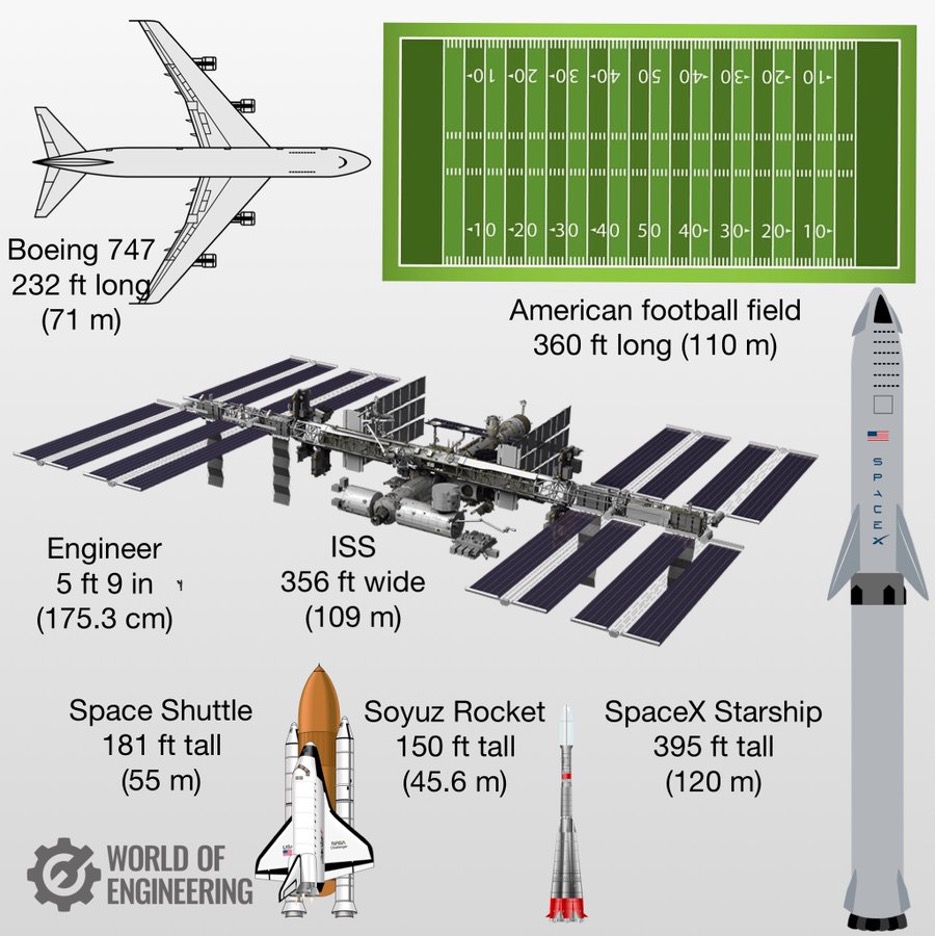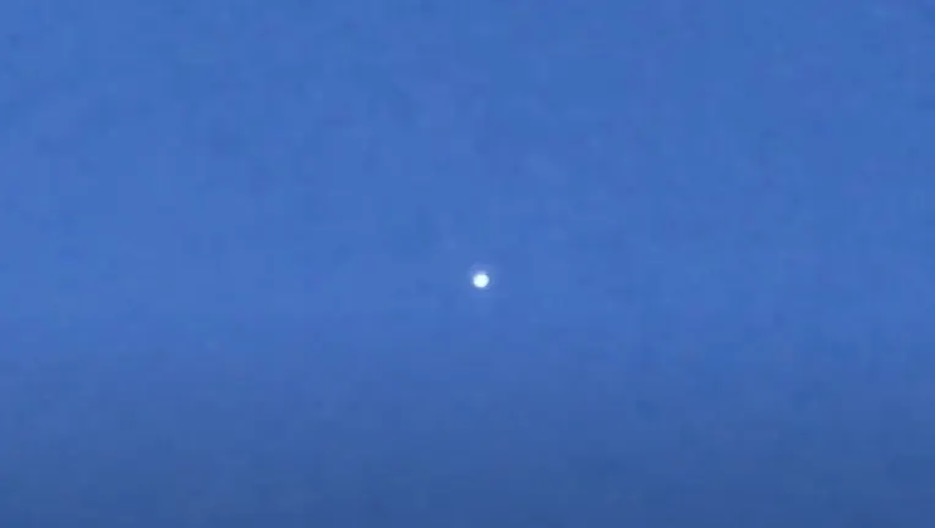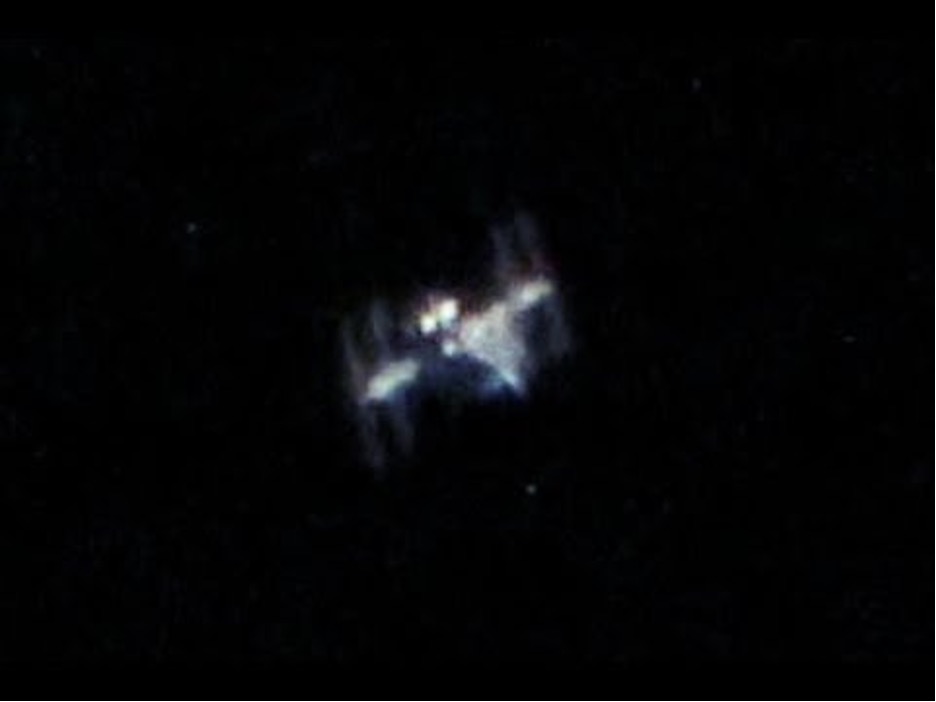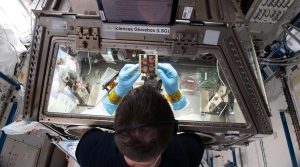A beacon for mankind in space: what does the ISS look like from Earth?
10th Jul 2023
The International Space Station sits in LEO about 250 miles high, so astronauts on duty there have the unique privilege of seeing half Earth’s globe at a glance. But can you see the space station from Earth, and what does it look like? Let’s find out.
Can you see the ISS from the land?
Yes, the International Space Station can be seen from the land (and sea surface, too). 250 miles from Earth is no small distance, but ISS is not a needle in a haystack either. By the way, if you have not read our article about all the space stations ever made, we suggest you do so.
So how big is the ISS? Imagine a 16-module structure measuring 108.4 by 74 by 20 meters (the area of a football field) and weighing 420 tons (almost twice the size of the world’s largest cruise ship, Wonder of the Seas). This is the most expensive man-made object in the world, worth 150 billion dollars, which was built by 14 countries over a period of 10 years! Let’s agree; something like that will be hard not to notice. Have a look at the comparison photo below to get an idea of the true scale of the ISS.

You can even observe such a colossus from Earth with the naked eye, and you probably saw it more than once; you just probably didn’t know what you were looking at because the ISS looks completely different in the with the naked eye than it does through a telescope lens.
What does the ISS look like from Earth?

From Earth, the ISS appears as a bright dot moving across the sky, resembling a star or an aeroplane without flashing lights. The thing is that the station is not a static object; it orbits the Earth at a tremendous speed (28 thousand km per hour), reflecting sunlight in the same way as the Moon, and its brightness changes depending on the angle of illumination and the state of the Earth’s atmosphere.
It should be noted that these factors make the ISS visible from Earth only under certain conditions. In other words, to see the ISS in the sky with the naked eye, you need to be in the correct position relative to the Sun and the observed object. We’ve put together a few tips on how to see the International Space Station in the best way.
How can you see the ISS without a telescope?
To view the ISS from Earth without using a telescope, you will have to do the following.
Find out when is the space station over your house
There are various online resources and applications that provide this information. We recommend Heavens Above and NASA’s Spot the Station. Here, you’ll find exact data about the ISS flyover, including start and end times, the current location of the ISS in the sky, and the direction of visibility from a specific location. Using these resources, you can schedule ISS viewing times in the UK.
Choose the right observation spot
This should be an open area free of tall buildings, trees or other obstructions that may block your view. The more open the sky is, the better. Can you see the space station from Earth? Yes, but not through the trees.
Make sure to bring binoculars
You don’t need a telescope to view the ISS from Earth. However, with binoculars, you will see more details and features than you would with the naked eye. Here is an example of what the ISS looks like through a binocular lens from Earth.

Keep an eye on the motion
When the ISS time-of-flight starts, look for a bright moving dot in the sky that looks like an airplane without flashing lights. Keep in mind that it will move quickly enough and disappear from view in a few minutes. Can you see the space station from Earth? Yes, but you’d better look sharp!
Is the ISS visible from Earth at night?
Yes, and even better than during the day, but there are a couple of nuances. The best viewing conditions at night occur when the ISS passes overhead just before dawn or after sunset. During this time, the observer’s position is in the Earth’s shadow, but the ISS is still illuminated by sunlight. This is why the station can “burn” brighter than all other objects in the night sky, and the observers have repeatedly mistaken it for a UFO.
Can you see astronauts on a spacewalk on the ISS from Earth?
With the naked eye, it is impossible to see ISS astronauts from Earth during their spacewalk. Judge for yourself. If we see the ISS as a small dot in the sky, then how can we see an astronaut who is hundreds of times smaller than the station itself? Besides, even with a telescope, catching sight of the astronaut is problematic because, to do this, you need powerful optics and an a bit of luck so that the modules and solar sails of the station do not obscure the astronauts.
This is not a reason to be upset, though. Astronauts are often photographed or filmed during their spacewalks, and these materials are published on the official channels of space agencies and other media. This is how you can the ISS astronauts work in great detail.
What does the sky look like from the ISS?
As we mentioned at the beginning of this article, astronauts, unlike earth-bound observers, have the unique privilege of seeing the Earth from space at a glance. The absence of atmospheric interference, combined with a unique vantage point, gives a truly breathtaking view of the sky and Earth from the ISS.
- Due to the orbit’s height of 400 km, the station is above most of the Earth’s atmosphere. As a result, the sky from ISS appears much darker than from the surface of the Earth.
- The unique vantage point allows you to see the Earth’s curvature and the thin blue line of the atmosphere that surrounds our planet.
- The transition from day to night is remarkably fast. Astronauts aboard the ISS see multiple sunrises and sunsets in a single day as they orbit the Earth once every 90 minutes.
- When the ISS passes through regions near the Earth’s poles, astronauts have the opportunity to observe the northern lights (Aurora Borealis) and the southern lights (Aurora Australis), when charged particles interacting with the Earth’s magnetic field create the dazzling displays of vibrant colours.
Let’s agree, such beauty is worth spending hundreds of hours on grueling training to get into the astronaut corps or even several dozens of millions of dollars to fly into space as a tourist.
Final Thoughts
So, can you see the space station from Earth? Of course! You now you know what the space station looks like from Earth. A huge structure the size of a football field and 20 meters in height is seen from a distance of 260 miles as a tiny dot, resembling a bright star or an aeroplane with unblinking signal lights. If the ISS were even further away from Earth, we would not be able to see it at all. And this is not surprising. After all, on the scale of the Universe, all celestial objects are tiny dots.






Thank you for your comment! It will be visible on the site after moderation.